The 50 States Project is a series of candid conversations with interior designers across the country about how they’ve built their businesses. This week, Lexington, Massachusetts–based designer Robin Gannon tells us how her law career informed her design trajectory, why she doesn’t stress over systems and how she she bills for every hour of design time that any team member is working on a project.
Design was not your first career. What made you realize that you wanted to pivot into this field?
I always knew that I wanted to be a prosecutor, and that’s what I did. I loved every minute of it, but it just didn’t pay. My first job out of law school, I made $22,000 a year. By my third year in, I was prosecuting felonies in the district attorney’s office and making $29,000 a year. I was like, “This is just not sustainable.” But I loved being in court, I loved getting up in front of a judge or jury and I loved coming up with creative ways to argue things. So I left the DA’s office and started my own practice as a criminal defense attorney—I was still part of the game, just on the other side. I did that for a lot of years, and I really liked it. Then I got pregnant.
What did that change?
One of the things that made me a really good trial attorney was that I was very emotionally charged about my cases—I was very emphatic about what I was saying, and I believed it wholeheartedly. But those same qualities also made it really hard for me to leave that [energy] behind. While I was pregnant, I had one client in particular who was very emphatically declaring that he did not commit the crime for which he was charged, even though the evidence against him was very strong, so I hired a polygraph examiner who was a former FBI agent. After my client took and failed the polygraph, the examiner took me aside and said, “Be careful of this guy.” At the time, I was twentysomething years old, I had my own practice, I was working late at night—I realized I didn’t want the possibility of somebody following me home and seeing where I live with my family, and that it was time for me to close my practice.
I kept working in law for a few years, doing appellate work out of the house. If somebody thinks their conviction was unlawful, they can file a notice of appeal. By then, they’re typically indigent because they’re in jail, so the Superior Court or the Supreme Court will appoint an attorney to represent them. That was me. It’s a lot of research and writing, and I did that for a few years through my second child, when it started to get increasingly harder to research and write during naptime. After three years in, I knew it was time to hang up my law shoes. It’s one of those professions that’s really hard to leave for a time and come back to.
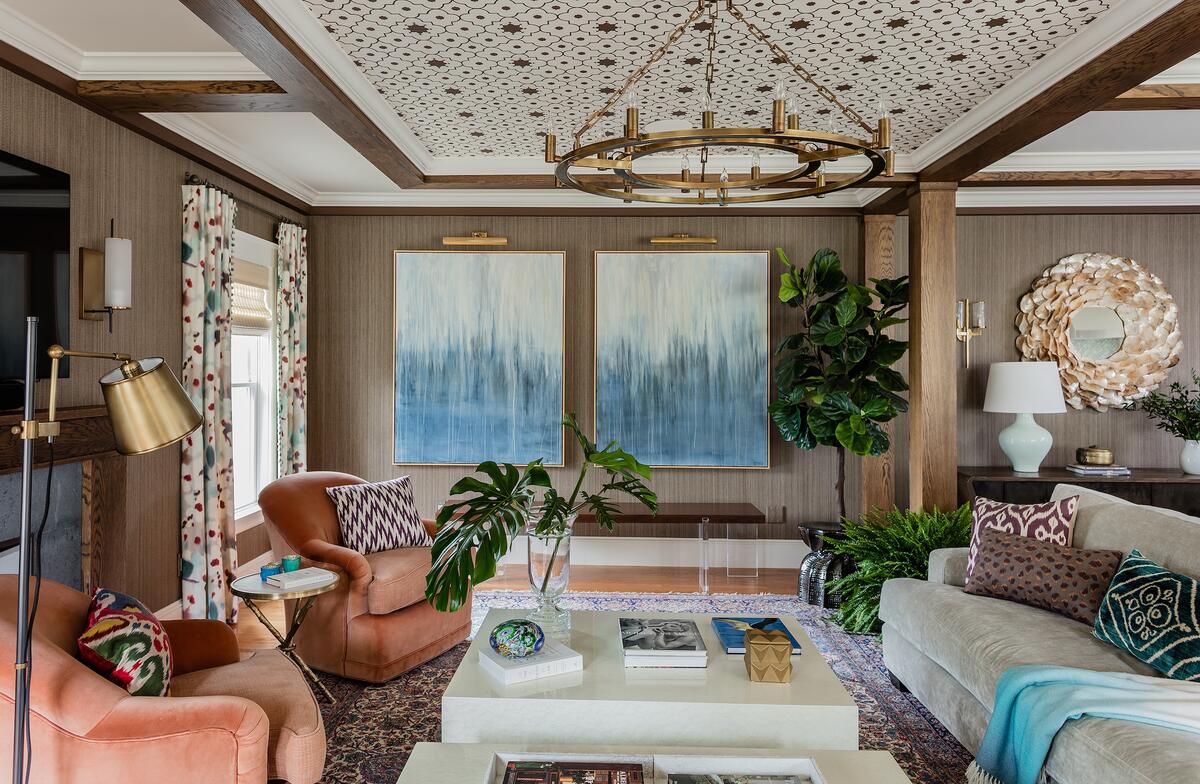
You still hadn’t caught the design bug yet.
Fast-forward to my third child, and our family was up in Maine on vacation for the summer. My youngest at the time was two years old, and I was thinking, “What’s the next iteration of me?” I never really thought I would go back to work, and I definitely didn’t think I would go back to work full-time, but emptying the dishwasher just wasn’t satisfying enough anymore. I wasn’t a yoga mom or a lady who lunched.
Five or six years earlier we had torn down our house and rebuilt it, and I really enjoyed that. Shortly after, when I was trying to buy some furniture for it, I went to this store and was picking out some fabrics. I was putting a certain fabric on the sofa, another fabric on a chair and another fabric on another chair, and the saleslady was like, “Well, those don’t go together.” And I was like, “Yes, they do.” It was subtle, but I could see the thread that tied them together. She couldn’t, which is fine, but it was the first moment of, “I like this. Maybe I could do this.” So on vacation, as I was thinking about what came next, that was lingering in my head. I was like, “Maybe I’ll go to design school.” You know that moment in Legally Blonde where the people in the Harvard admissions office are like, “Do you think she woke up one day and said, ‘I think I’ll go to law school’?” It was kind of like that for me, but with design school.
But going to school was an essential step for you.
I’m definitely somebody who feels like education is really important—especially because [design] wasn’t something I grew up with, or that I had gotten a job doing. I enrolled in the residential interiors continuing-ed program at the Boston Architectural College, and my first class was drafting. It was awesome. I don’t even remember what I took second, to be honest—I think it was an introduction to interior design—but then I got pregnant with my fourth child and took a year off. After that, I started doing a class or two a semester. They were mostly afternoon and night classes, so I’d get a babysitter and go into Boston for class. It was fun, and I really liked what I was doing. My kids loved that I had homework.
One day, I was late to pick up my eldest son at Hebrew school. Before I got there, he saw that [an acquaintance of mine who was also picking up her kids] had a design magazine, and he was like, “Oh, my mom’s a designer.” Later, she called me and says, “Cole tells me you’re a designer?” In that moment, I was like, “I am now.” And she’s like, “I just bought a new house and I have two empty rooms. Can I hire you? Do you have a portfolio?” And I was like, “No,” but she said, “Well, I like the way you dress.” And I was like, “OK, we’ll go with that!” That’s when I went out and filed all my paperwork to open the business, and that was my first project.
How did it go?
It was spring of 2009, so any showroom would let you open an account with them, and I opened every account that anybody would let me. The project was two rooms, and the budget was $80,000. I remember thinking, “This is a lot of money—I hope she likes what we’ve purchased, because otherwise it may end up in my house.” I was by myself, so I had nobody to run things by—nobody to say, “Is this right?”

How did the business grow from there?
I thought I’d work part-time, taking a few projects at a time. For the first three years, I worked out of the little room above my garage; then I got a studio and decided to open a shop at the same time. The pivotal moment for me was in the fall of 2012—I had just opened the store when I got a huge job to design a 22-room inn. I remember thinking, “This is either going to launch my career or it’s going to sink it.”
I think I know how that story ends!
Thankfully, it got really good reviews. A year later, it became a Relais & Châteaux property. It was in Travel + Leisure. And to this day, some of my biggest clients have come from that property. One client loved the stools that we [specified for] the bar. She had just bought a condo on Beacon Hill, and she was like, “You know, I might need some stools.” And I said, “OK, well, we don’t just do stools.” And she’s like, “Well, I might need a few other things.” That turned into the whole condo, and now we’ve done several of her other properties—we’re still working with her.
What changed for you after that project?
The project ended up being a full-time job. I mean, it was 22 bedrooms and several sitting areas, and every room is different, plus the restaurant and bar. It was a two-year project. When I’ve interviewed for large projects since then and they’re like, “Can you handle this?” I say, “Is your house bigger than 22 bedrooms?”
Before the inn opened and the response was so positive, I was like, “Am I even any good at this? Do I know what I’m doing?” But I think that was the moment where I was like, “OK, let’s go.”
Where did you look to for systems and processes as the firm grew?
I never really was that worried about that part. I ask a thousand questions—I talk to people. When I was in design school, we had a guest lecturer whose company provided back office support for designers, so when I started my business, I knew I was going to hire him. And for a while, it was OK, but there were a lot of kinks in it.
Sometimes you meet the right people at the right time. About 10 years ago, when I was also the chair of the board of a nonprofit for homelessness, I came to be friends with this woman who was also on the board, and she was sharp—she ran a transportation company with her husband. So I said, “Can I hire you to be a consultant? Because what we’re doing is not working.” And she did this whole flowchart of our process and said, “It’s time for you to hire somebody in-house. Then you control it—and it’s not that much more money.” That’s when I hired my first account manager to do the books and the processing. And I eventually met a gentleman who advises a lot of design firms, and he does my quarterly books.
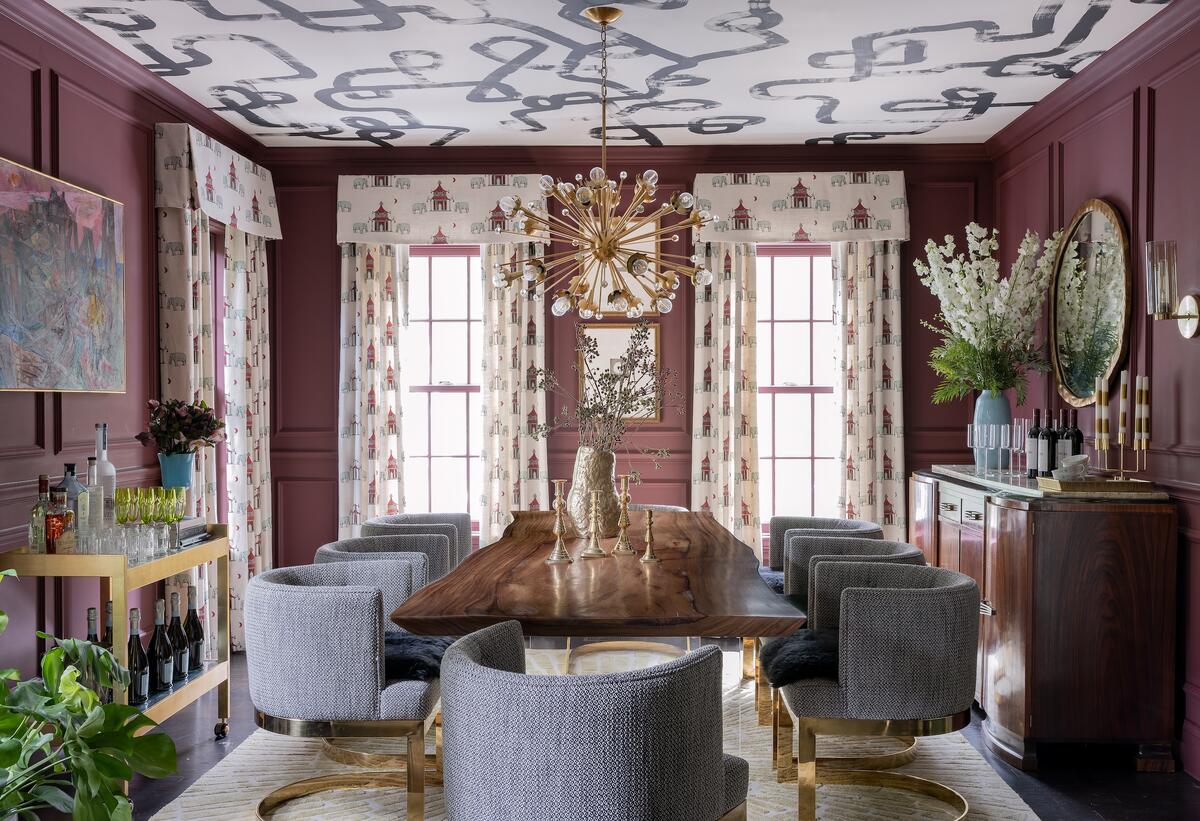
What about your fee structure?
When it came to fees, I remember [asking a different administrative support person I’d hired], “Am I double-billing clients when I’m charging them hourly to do the work, but then also charging them the markup?” And he said, “Think of it this way: The first part of your design where you’re charging them hourly is your service [element].” You’re designing, showing the client fabrics, product, the whole nine yards. He said, “Then you send them a proposal, and put on your storefront hat. Whether you buy it for them or they buy it themselves, that’s [a separate element] of the business.” That made a lot of sense to me.
I charge $275 an hour and my markup is 35 percent over net. An advisor once told me, “Just keep raising your rate until somebody pushes back.” That doesn’t really feel right to me, but I do raise my rates $10 to $20 an hour every few years. My markup has stayed the same the whole time, though, and I won’t go any higher—sometimes for big-ticket products, I go lower.
Is that complicated to talk about with clients?
Not really. It’s funny, because there was a time when I was a little more vague about it—actually, in my letter of agreement, it just says “prices as quoted,” and not a single person has ever asked me about that. But I do say to them, “My markup is 35 percent over net, and you will never be charged more than retail”—because there are times when we’ll do vintage or antiques, and our discount on those [pieces] is very small. If I’m getting a 12 percent discount on an antique, I’m marking it up so that you’re paying what you would have paid, but we also have a wide array of vendors where we buy direct from the manufacturer, when retail is three times the wholesale price, so they’re [still] getting a huge discount when I’m marking it up 35 percent on wholesale. And I usually reduce the markup on any single item over $10,000, because sometimes it just feels obscene to me. On my very first project, I specified this gorgeous $10,000 racetrack table, and it was the right piece for the space and I wanted her to get it so badly that I reduced the markup to a number [I thought] she would accept, because it was more important to me to give her the right table for the design than make the extra money.
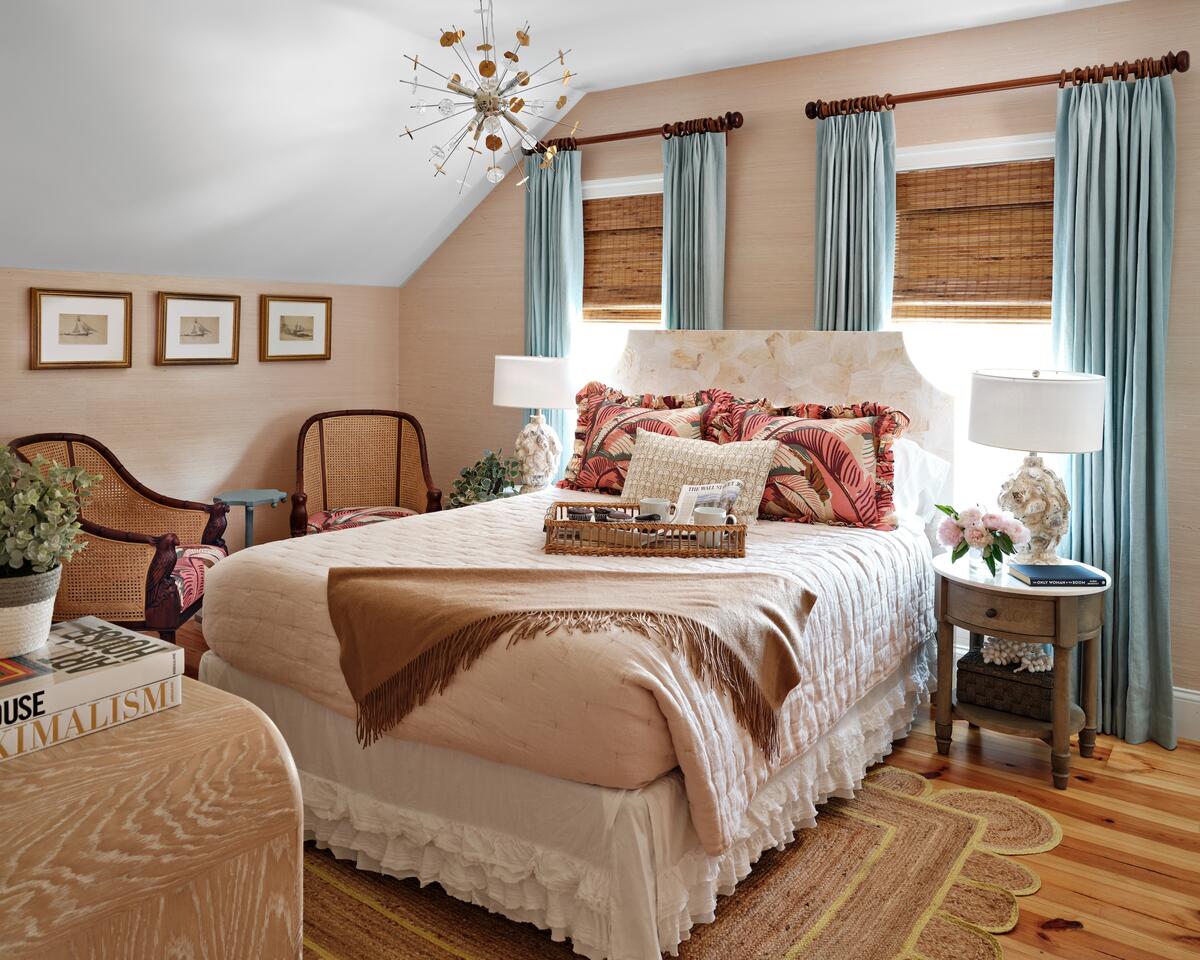
What does your team look like today?
We’re a team of nine total. I’m the principal and creative director. I have a senior designer/interior architect, three design assistants/project managers, a procurement/logistics coordinator, an account manager, a business manager and a marketing director.
As you were growing that team, how did your role evolve, and where do you fit into the flow of work today?
Sometimes I’m actually the problem because I can’t pump it out fast enough. I’m in a stage right now where we have so much work—I’m going to knock on wood, because I am so blessed—but I’m trying to just absorb it myself so I don’t stress out the team. We’ve been in situations where [my team is] just bursting at the seams, and I don’t want to do that to them. Everyone in my office works super hard, so I’d rather just take it on the chin myself than be like, “You need to do this, this, this, this and this.”
Some of [that workload] is from projects where I’d love to say, “Can you give me two or three months to [start]?” But the reality is, the answer’s no, and the jobs are too good to pass up. Either it’s a client I’ve worked with before and I don’t want them to move on to somebody else, or it’s an important new client, so I just end up working more.
What’s the most helpful change you’ve made within the firm lately?
We had a little bit of a breakdown recently where there was just too much back-and-forth between the project managers and the logistics coordinator that I didn’t think was efficient. So we are actually in the middle of a systems change—I don’t know if it’s going to work, but we’re trying it. Before, I had a logistics coordinator whose job it was to track everything once it was ordered. Now, we’re transitioning that person into actually placing all the orders and also tracking them. That way, she knows when the order was placed and can follow up on it, and she can also be the person who’s telling everybody where everything is.
Do you like that part of running a firm—the systems and logistics?
No. The part that brings me joy is the beginning and the end—but in order to do that, you’ve got to get through the middle. And I think it’s actually the most important part of the job. At the end of the day, of course everything is going to look pretty, and hopefully the clients are super happy. But how painful was it to get there? Maybe it’s not perfect—nothing is—but the goal is to get clients smoothly through the process. That’s why we’ve invested. I mean, almost half my staff is not producing design work.
Right, they’re not billable hours.
Well, no, I bill for them. I bill for everybody’s hours that go toward the project. For example, if my account manager is paying invoices or cutting checks for your project, he bills his hours. I wouldn’t have to pay him if he wasn’t working on your project. So if I have to pay him to work on your project, I’m billing you for that. Now, the stuff we don’t charge for is anything that happens post-installation—say something shows up broken or needs to be fixed, we don’t charge.
I always say this to clients: I run my business the way I ran my law firm. Every 15 minutes of time that is worked on your project gets billed to you—that’s just the way we do it, and if you don’t like that, I understand, but this is a business. I mean, I love what I do 90 percent of the time, but at the end of the day, I’m in this to make money.
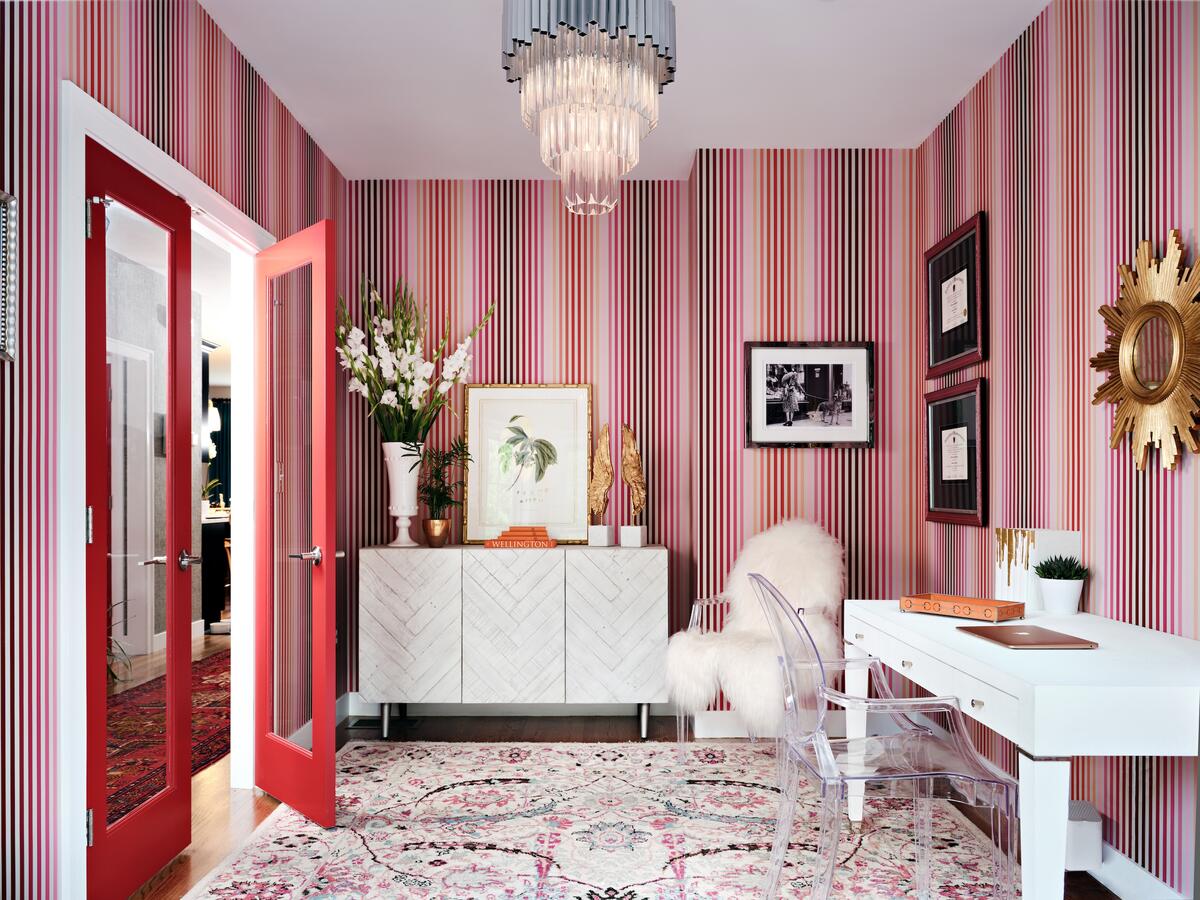
Before, you were telling me how you loved being in court. Does that same passion come out in your design presentations?
I make presentations with confidence, and there is always, always a why. I am never a dart-on-a-dartboard designer. I can explain every decision. And it’s not just, like, “Look at this design board, isn’t it great?” It’s, “These are the decisions we made. This is why. This is the information that I heard from you. This is what you were looking for. This is why we came at it from this perspective. This is what we’re delivering to you. We think it fits the space and the design aesthetic, and it’s going to look amazing.” And that works.
How does being in Lexington impact the opportunities that come your way?
I definitely have a New England [aesthetic] vernacular. Even when I did the Kips Bay Decorator Show House in Palm Beach in 2020, my bed was black-watch plaid. There are things that I naturally gravitate toward—I love linens, because to me it’s beachy, breezy Cape Cod, but I also love the rich wools and mohairs that you just want to sink into when it’s cold and rainy. History is a really important part of Massachusetts, especially where I live, so I do have that sensibility of what came before and making sure that we respect it while also giving people a here and now.
I actually have four projects in other states right now, and it’s been interesting trying to understand how the climate, as well as the materials vernacular, is different than here—that absolutely has to be taken into consideration when you go somewhere, though I think I’ll always take my New England sensibility with me.
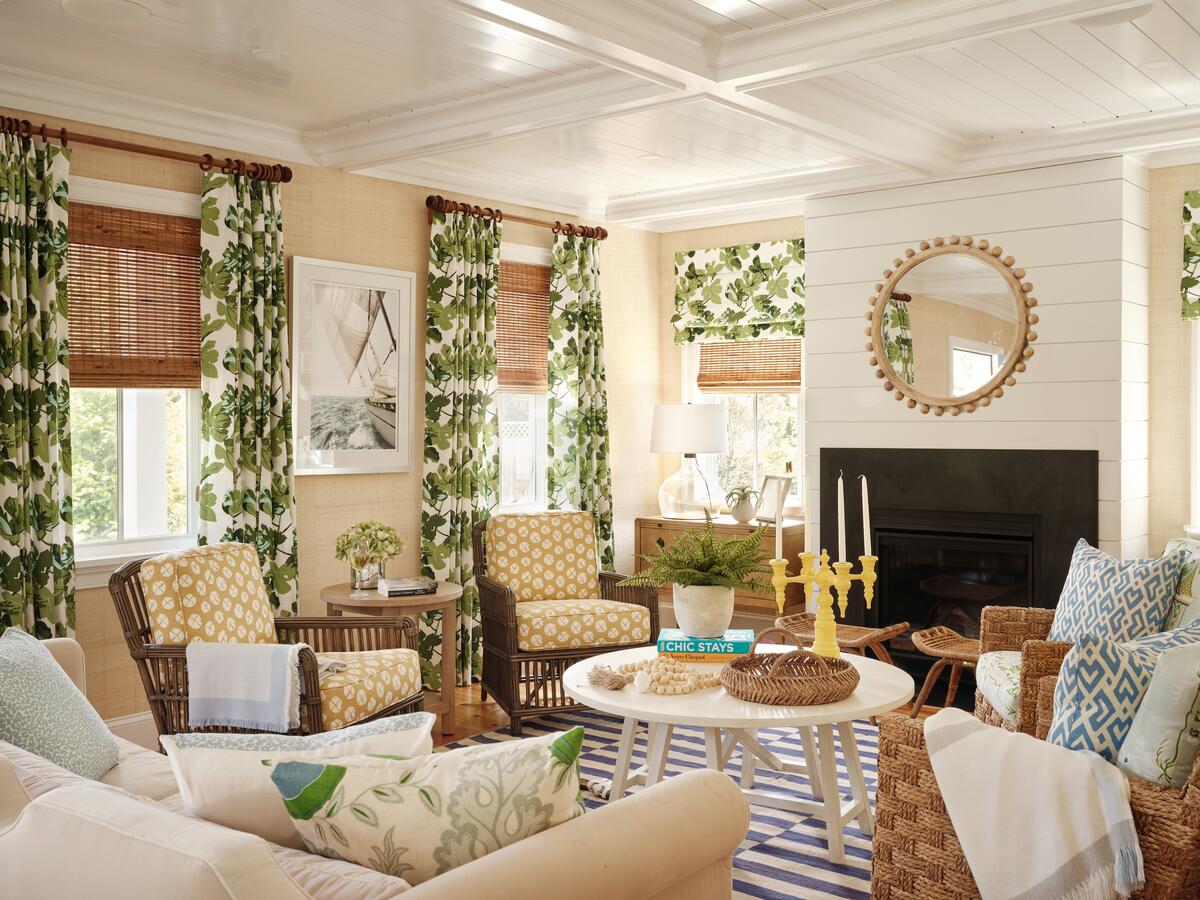
What do you know now that you wish you had known when you started your firm?
Watch your money. I had a bookkeeper years ago who stole a lot of money from me—she’s going to jail today, actually. I wish I had paid closer attention to that one. And every time I’ve told somebody that story, they know somebody else it has happened to.
I’m so sorry. How do you bounce back from that?
The night I discovered it, I was in the office talking to the police and trying to uncover the extent of it until 2 in the morning. When I finally got into my car to go home, I said to myself, “Knock on wood, at least all my children are OK. It’s just money.” And thankfully, the firm was doing well enough that it didn’t sink us. It hurt—it certainly hurt. But as one of my friends said to me, “You didn’t know you had it to lose.” [The thief] was very good at hiding it, so I didn’t even know it existed before it was gone.
I’m a trusting person. But I now have people in place who are paying closer attention to the store, so to speak. I mean, aside from the financial piece, it was a huge violation of trust—she had been with us for two years and was really good at what she did. Unfortunately, she was good at it for the wrong reasons.
What does success mean to you today?
I feel like perspective is so much of that. I was talking to a colleague the other day—I think she’s phenomenal and at the top of her game, but she was talking to me as if my success was greater, and I was like, “That’s so funny, because I think you’re doing phenomenal things.”
I don’t think you can ever stop growing, but I don’t necessarily think I want to grow in size. Managing seven to eight full-time people is a lot, and at some point, you lose your touch on the clients and the project if your firm gets too big. The growth is taking on projects in other parts of the country, and just bigger projects. I’d love to get in on those 20,000- or 30,000- or 40,000-square-foot family estates, or get to the place where clients want to come to me first and then bring on their architect and builder. I’d love to design my own furniture line and do a book.
Toward the beginning of my career, I read an interview with Thomas Pheasant—I think it was when he was designing the White House—and he was like, “I still do 100 percent of my design.” And that’s what I want to be.
To learn more about Robin Gannon, visit her website or find her on Instagram.





























